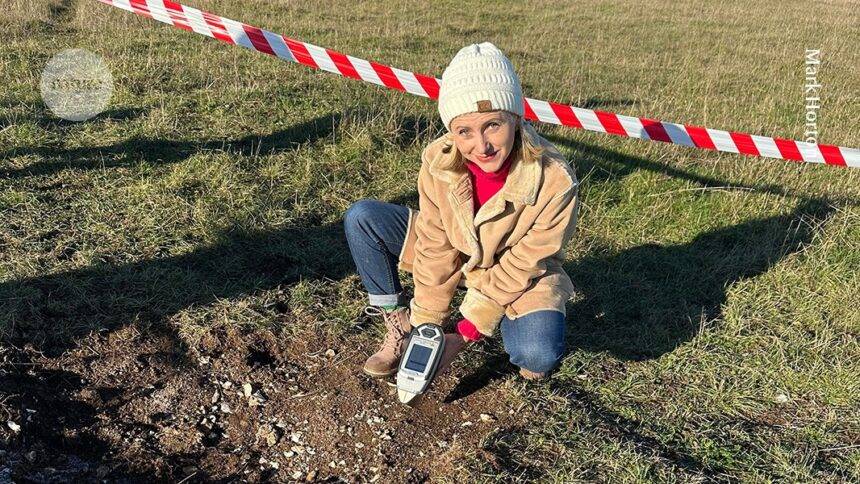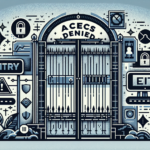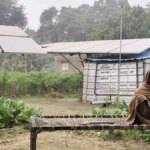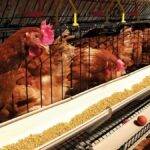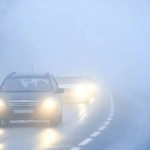Main Points In Hindi (मुख्य बातें – हिंदी में)
यहां दी गई जानकारी के मुख्य बिंदु इस प्रकार हैं:
-
ओलेना मेलनीक का संघर्ष: ओलेना मेलनीक, जो यूक्रेन के सुमी नेशनल एग्रेरियन यूनिवर्सिटी में अंतर्राष्ट्रीय परियोजनाओं की प्रमुख हैं, ने रूस-यूक्रेन युद्ध के दौरान अपने परिवार की सुरक्षा के लिए यूक्रेन से भागने का कठिन निर्णय लिया।
-
स्विट्ज़रलैंड में नई भूमिका: भागने के बाद, उन्होंने स्विस फेडरल इंस्टीट्यूट ऑफ टेक्नोलॉजी (ईटीएच) में जलवायु नीति लैब में एक वरिष्ठ शोधकर्ता के रूप में कार्य करना शुरू किया। वे अपने पुराने काम को दूर से जारी रखते हुए अंतर्राष्ट्रीय परियोजनाओं का प्रबंधन कर रही हैं।
-
मिट्टी का प्रदूषण अध्ययन: युद्ध के दौरान यूक्रेन में बम विस्फोटों के कारण मिट्टी के प्रदूषण का विश्लेषण करने का काम कर रही हैं। उन्होंने कृषि भूमि के लिए मिट्टी-उपचार रणनीतियों पर एक परियोजना का समन्वय किया।
-
अनुसंधान में निरंतरता: ओलेना ने यूक्रेन में अपने सहयोगियों के साथ मिलकर युद्ध के प्रभावों को देखते हुए मिट्टी के नमूने एकत्र किए और उनकी जांच की। उनके शोध ने यह साबित किया कि व्यापक प्रदूषण की आशंका के बावजूद, अधिकांश क्षेत्रों में भारी धातुओं का स्तर कानूनी सीमा के भीतर है।
- वैज्ञानिकों और छात्रों के लिए सलाह: ओलेना ने संकटग्रस्त वैज्ञानिकों और छात्रों को उम्मीद न छोड़ने और अपने नेटवर्क को विकसित करने की सलाह दी। उन्होंने परियोजना प्रबंधन कौशल विकसित करने और नए अवसरों के लिए खुले रहने की आवश्यकता पर बल दिया।
Main Points In English(मुख्य बातें – अंग्रेज़ी में)
Here are 4 main points drawn from the provided text:


-
Oleksandra Melnyk’s Journey: Oleksandra Melnyk, head of the International Projects Division at Sumy National Agrarian University (SNAU), fled Ukraine for Switzerland amid the Russian invasion in March 2022. She transitioned to a senior researcher role at the Swiss Federal Institute of Technology (ETH) in Zurich while continuing to oversee international projects for SNAU remotely.
-
Research Focus on Soil Contamination: Melnyk is coordinating a project at Royal Agricultural University (RAU) in the UK that analyzes soil pollution from Russian bombings in Ukraine. This involves developing soil treatment strategies for agricultural lands affected by heavy metal contamination and conducting comprehensive sampling in war-impacted regions.
-
Collaboration and Adaptation: Throughout her journey, Melnyk emphasizes the importance of international collaboration and adapting her research to changing circumstances. She continues to support her colleagues at SNAU from abroad and has maintained connections with students through remote teaching and workshops.
- Key Findings and Future Plans: The research identified significant pollution levels in some regions of Ukraine, with heavy metal concentrations exceeding legal limits in certain areas. The team aims to create a digital map that provides accessible information regarding soil conditions, allowing for informed decision-making on land use and restoration.
Complete News In Hindi(पूरी खबर – हिंदी में)
यूके के सैलिसबरी प्लेन सैन्य प्रशिक्षण क्षेत्र में ओलेना मेलनीक, बम क्रेटर्स में उपयोग के लिए मिट्टी-नमूना प्रोटोकॉल का परीक्षण कर रही हैं।श्रेय: मार्क हॉर्टन
यूक्रेन में सुमी नेशनल एग्रेरियन यूनिवर्सिटी (एसएनएयू) में अंतर्राष्ट्रीय परियोजना प्रभाग के प्रमुख के रूप में, ओलेना मेलनीक अक्सर शोधकर्ताओं को अंतर्राष्ट्रीय नेटवर्क बनाकर नवीनतम विकास के साथ बने रहने के लिए प्रोत्साहित करती थीं। उसे कम ही पता था कि फरवरी 2022 में यूक्रेन पर रूसी आक्रमण के बाद यह कौशल उसे अपने परिवार को बचाने में मदद करेगा।
मेल्नीक 8 मार्च 2022 को सुमी से भाग गईं और अंततः स्विट्जरलैंड के ज्यूरिख में स्विस फेडरल इंस्टीट्यूट ऑफ टेक्नोलॉजी (ईटीएच) में क्लाइमेट पॉलिसी लैब में एक वरिष्ठ शोधकर्ता के रूप में शामिल हो गईं – इस पद पर वह इस साल की शुरुआत तक रहीं। वह दूर से एसएनएयू के लिए अपना काम जारी रखती है, जिसमें अंतरराष्ट्रीय परियोजनाएं शुरू करना और पारिस्थितिकी के अंशकालिक एसोसिएट प्रोफेसर के रूप में काम करना शामिल है। स्विटज़रलैंड में, वह अन्य यूक्रेनी प्रवासियों और शरणार्थियों से घिरी हुई है जो अपने शोध के माध्यम से अपने गृह देश को वापस दे रहे हैं। यूके के सिरेनसेस्टर में रॉयल एग्रीकल्चरल यूनिवर्सिटी (आरएयू) में मानद प्रोफेसर के रूप में, वह रूसी बमबारी के परिणामस्वरूप मिट्टी के प्रदूषण का विश्लेषण करने और कृषि भूमि के लिए मिट्टी-उपचार रणनीतियों को विकसित करने के लिए एक परियोजना का समन्वय कर रही हैं।
मेलनिक से बात की प्रकृति सुमी से ज्यूरिख तक की उनकी यात्रा, अपने अनुसंधान फोकस को बदलने के उनके अनुभव और अनुसंधान में परियोजना प्रबंधन के महत्व के बारे में।
युद्ध के पहले कुछ हफ्तों में कैसा था और आप कैसे बाहर निकले?
मैं अपने परिवार के साथ उत्तरपूर्वी यूक्रेन में पीसेल नदी के तट पर स्थित शहर सुमी में था। उस समय, रूसी सैनिकों ने सुमी को घेर लिया था लेकिन अभी तक उस पर कब्ज़ा नहीं किया था। मैंने मुख्य रूप से रात में काम किया क्योंकि दिन के दौरान, हम सूचित रहने के लिए समाचार देखते थे। हम अपना घर नहीं छोड़ सकते थे क्योंकि यह बहुत खतरनाक था। वहाँ सीमित भोजन था – सुपरमार्केट में अलमारियाँ खाली थीं। इस दौरान विश्वविद्यालय के छात्रों की मदद करने के लिए, हमारे पास एक चक्रीय कार्यक्रम था, जिसमें कर्मचारी बारी-बारी से अंतरराष्ट्रीय और स्थानीय छात्रों को भोजन उपलब्ध कराते थे जो घर नहीं जा सकते थे।
मैं जानता था कि स्थिति किसी भी समय बदतर हो सकती है, इसलिए हमने अपना बैकपैक और सूटकेस पैक कर लिया था। फिर भी, हमने यूक्रेन में रहने पर विचार किया। लेकिन 7 मार्च की रात मेरे घर से कुछ ही दूरी पर भयानक मिसाइल हमला हुआ और 24 लोग मारे गये. तभी मैंने यूक्रेन से भागने का फैसला किया – मुझे यह सुनिश्चित करना था कि मेरा बेटा और बेटी सुरक्षित रहें।
ओलेना मेलनिक के सहयोगी, इगोर कोवलेंको, जो यूक्रेन में सुमी नेशनल एग्रेरियन यूनिवर्सिटी के पारिस्थितिकीविज्ञानी हैं, जून 2023 में सुमी के पास एक बम क्रेटर से मिट्टी के नमूने लेते हैं।श्रेय: वलोडिमिर इवचेंको
मैं काफी भाग्यशाली था, कि जिन अंतर्राष्ट्रीय साझेदारों के साथ हमारी परियोजनाएँ थीं, उनमें से अधिकांश ने मुझसे संपर्क किया और मुझे और मेरे परिवार की मेजबानी करने की पेशकश की। मैं यह देखकर आश्चर्यचकित था कि लोग कितने दयालु थे। तुर्की दूतावास से संबंध रखने वाले एक मित्र ने सुमी से हमारे भागने की व्यवस्था की, और तुर्की के सैमसन में ओन्डोकुज़ मेयस विश्वविद्यालय के मेरे कुछ सहयोगियों ने हमारी मेजबानी की।
आपको ज्यूरिख में पद कैसे मिला?
युद्ध के दौरान हमने यूक्रेनी शोधकर्ताओं का अध्ययन करने की ओर कैसे ध्यान दिया
एक बार जब मैं यूक्रेन से भाग गया, तो मैंने अपना सीवी अपडेट किया, एक कवरिंग लेटर लिखा और इसे विदेश में कई विश्वविद्यालयों को भेजा। पहला उत्तर ETH के एक प्रोफेसर की ओर से आया। उन्हें मेरा सीवी पसंद आया लेकिन हमारी शोध रुचियां मेल नहीं खाती थीं। उन्होंने मुझे ईटीएच में पर्यावरण निर्णय संस्थान के उप प्रमुख एंथनी पैट से मिलाया, जिन्होंने मुझे जलवायु नीति लैब में एक वरिष्ठ शोधकर्ता पद की पेशकश की।
मैं मार्च 2022 के अंत में अपने परिवार के साथ तुर्की से ज्यूरिख में स्थानांतरित हो गया। ईटीएच में, मैंने यूक्रेनी समुदायों की युद्ध के बाद की बहाली के लिए जलवायु-अनुपालक समाधान पर एक परियोजना का नेतृत्व किया। उदाहरण के लिए, हमने दिखाया कि नवीकरणीय ऊर्जा उत्पादन, गर्मी और परिवहन के लिए बिजली का उपयोग और नवीन ऊर्जा-भंडारण प्रौद्योगिकियों के संयोजन के माध्यम से, यूक्रेन जीवाश्म ईंधन और परमाणु ऊर्जा पर निर्भर हुए बिना अपनी ऊर्जा मांगों को पूरा कर सकता है।1.
यूक्रेन छोड़ने के बाद से एसएनएयू में आपकी भूमिकाएँ कैसे विकसित हुई हैं?
एसएनएयू में मेरी अंतरराष्ट्रीय-परियोजनाओं की भूमिका में, मैं कई विभागों में अनुसंधान परियोजनाओं का समन्वय करता हूं, अंतरराष्ट्रीय संस्थानों के साथ साझेदारी का प्रबंधन करता हूं और अंतरराष्ट्रीय अनुदान के लिए आवेदन करता हूं। मैं अभी भी इस टीम का दूर से नेतृत्व करता हूं।
एक पारिस्थितिकी प्रोफेसर के रूप में अपनी भूमिका में, मैंने 2023 के मध्य तक छात्रों को दूर से पढ़ाना और एसएनएयू पारिस्थितिकी और वनस्पति विज्ञान विभाग में मास्टर परियोजनाओं का पर्यवेक्षण करना जारी रखा, जब मैंने नियमित शिक्षण कर्तव्यों से इस्तीफा दे दिया। हालाँकि, मैं कभी-कभी एसएनएयू में छात्रों के लिए खुला व्याख्यान देता हूँ और कार्यशालाओं का नेतृत्व करता हूँ।
अपने नए सामान्य के साथ तालमेल बिठाना एक बड़ी चुनौती थी। अपने गृह देश से बाहर होने के कारण, बहुत सारी अनिश्चितताएँ थीं और साथ ही, यूक्रेन में मेरे सहयोगियों को दैनिक शारीरिक हमलों और बिजली कटौती का सामना करना पड़ रहा था।
मैं लचीली समय सीमा निर्धारित करने का प्रयास करता हूं और टीम के सदस्यों के साथ लगातार संपर्क में रहता हूं। जब भी संभव होता है मैं उनसे व्यक्तिगत रूप से जुड़ता हूं; उदाहरण के लिए, मैंने उन्हें बर्न में एक गोलमेज चर्चा में शामिल होने के लिए आमंत्रित किया। मैं अच्छी तरह समझता हूं कि इस समय यूक्रेन में रहना कितना कठिन है। उन्हें इस ब्रेक, कुछ ताज़ी हवा और यह देखने की ज़रूरत है कि दुनिया भर के लोग उनका समर्थन करते हैं।
आपको यूक्रेन की धरती पर युद्ध के प्रभाव का अध्ययन करने के लिए किसने प्रेरित किया?
2022 की शुरुआत में, एसएनएयू के साथ मिलकर काम करने वाले कई किसानों ने मिट्टी की गुणवत्ता के बारे में चिंता जताई। उन्होंने हमें बताया कि वहाँ बहुत सारे बम क्रेटर, खाइयाँ और बम विस्फोट थे2 – मिट्टी पर युद्ध के प्रभाव का वर्णन करने के लिए अमेरिकी वैज्ञानिकों जोसेफ हूपी और रान्डेल शेट्ज़ल द्वारा गढ़ा गया एक शब्द – कि उन्हें यकीन नहीं था कि वे भोजन का उत्पादन कर सकते हैं। उन्होंने मुझे बताया कि उन्हें नहीं पता कि यूक्रेन की मिट्टी में क्या पाया जा सकता है, और यह बहुत जहरीली हो सकती है। इसलिए, मैंने भारी धातु संदूषण का आकलन करने के लिए मिट्टी के नमूनों को देखने और आरएयू के सहयोग से एक शोध परियोजना विकसित करने का निर्णय लिया।
आपने मिट्टी के नमूने कैसे एकत्र किये और उनका विश्लेषण कैसे किया?
जमीनी स्तर के संगठन यूक्रेनी विज्ञान के लिए लड़ाई जारी रखे हुए हैं
एसएनएयू कृषि संकाय के शोधकर्ताओं ने मिट्टी के नमूने और विश्लेषण का समन्वय किया। स्थानीय आपातकालीन सेवाओं के साथ सहयोग करने वाले किसानों द्वारा यूक्रेन के तीन क्षेत्रों, सुमी, खार्किव और चेर्निहाइव से नमूने एकत्र किए गए थे। फिर, नमूने या तो बर्न भेज दिए गए या एसएनएयू के सहयोगियों द्वारा वहां पहुंचा दिए गए। हमने सैंपलिंग प्रोटोकॉल को अंतिम रूप देने के लिए बर्न यूनिवर्सिटी ऑफ एप्लाइड साइंसेज में स्विस सॉइल कॉम्पिटेंस सेंटर, आरएयू और एसएनएयू के विशेषज्ञों के साथ एक गोलमेज चर्चा की। हमने विभिन्न पद्धतियों का उपयोग करके परीक्षण करने के लिए विभिन्न संस्थानों के साथ अपनी मिट्टी के नमूने भी साझा किए।
इसके बाद, एसएनएयू की टीम ने 300 से अधिक मिट्टी के नमूने लिए और एक्स-रे प्रतिदीप्ति, रमन स्पेक्ट्रोस्कोपी और परमाणु-अवशोषण स्पेक्ट्रोस्कोपी जैसी 9 स्पेक्ट्रोस्कोपिक प्रौद्योगिकियों का उपयोग करके 28 बम क्रेटर का विश्लेषण किया, या तो साइट पर या नमूने यूक्रेन में प्रयोगशालाओं में भेजे जाने के बाद। , यूनाइटेड किंगडम या स्विट्जरलैंड। इसके अलावा, हमने क्रेटर वॉल्यूम को मापने के लिए ड्रोन लॉन्च किए और उपग्रह और भू-स्थानिक डेटा एकत्र किया।
परियोजना के कुछ प्रमुख निष्कर्ष क्या थे?
दुर्भाग्य से, पूर्वी और दक्षिणी यूक्रेन में कुछ साइटें अत्यधिक प्रदूषित हैं, जिनमें भारी धातु की सांद्रता कानूनी सीमा से 20 गुना अधिक है। अन्य क्षेत्रों में, हमें मिट्टी की संरचना में कुछ बदलाव और टाइटेनियम, एंटीमनी, सीसा और कैडमियम जैसी भारी धातुओं का स्तर थोड़ा बढ़ा हुआ मिला। हालाँकि, मिट्टी का प्रदूषण उतना बुरा नहीं है जितना हमने शुरू में अनुमान लगाया था; अधिकांश स्थलों पर, हमने पाया कि भारी धातुओं का स्तर कानूनी सीमा के भीतर था।
मैं चाहता हूं कि हमारे काम का वास्तविक जीवन पर प्रभाव पड़े। मैं डेटा को हमारी सरकार और किसानों के लिए उपयोग योग्य बनाना चाहता हूं। हम अपने डेटा को एक डिजिटल मानचित्र में एम्बेड कर रहे हैं, जिसमें एक क्लिक से सारी जानकारी एकीकृत हो जाएगी।
मिट्टी की बहाली के लिए, हम साइटों को तीन श्रेणियों में विभाजित करने की योजना बना रहे हैं: ऐसे क्षेत्र जहां कृषि बिना किसी हस्तक्षेप के जारी रह सकती है; वे क्षेत्र जहां उचित उपचारात्मक उपाय किए जाने चाहिए; और भूमि जो पूरी तरह से कृषि से वापस ले ली जानी चाहिए। इसके बजाय इन क्षेत्रों को जैव विविधता, बहाली या बायोगैस के प्राथमिक स्रोतों के रूप में मक्का (मक्का), गेहूं और राई का उत्पादन करने के लिए पुन: उपयोग किया जा सकता है।
युद्ध या अन्य आपदाओं का सामना कर रहे वैज्ञानिकों और छात्रों को आप क्या सलाह देंगे?
इज़राइल-हमास संघर्ष का एक साल पूरा: युद्ध की स्थिति में शोधकर्ता का लचीलापन
सबसे पहले और सबसे महत्वपूर्ण बात, भले ही यह एक भयानक स्थिति हो, हार मत मानो। हमेशा बेहतर भविष्य में विश्वास रखें. सुनिश्चित करें कि आप सम्मेलनों में भाग लेकर मजबूत संचार कौशल और नेटवर्क बना रहे हैं – आप कभी नहीं जानते कि आपका अगला सहयोगी कौन हो सकता है। शोध से परे अपनी विशेषज्ञता का विस्तार करें, परियोजना प्रबंधन में अनुभव प्राप्त करें, जानें कि अपने शोध को आकर्षक कैसे बनाया जाए और फंडिंग ढूंढें। नई भाषाएँ सीखने का प्रयास करें और यथासंभव अंतर्राष्ट्रीय अनुभव प्राप्त करें। अंत में, अपने दिमाग को नए अवसरों के लिए खुला रखें।
Complete News In English(पूरी खबर – अंग्रेज़ी में)
In the UK’s Salisbury Plain military training area, Olena Melnyk is testing soil-sampling protocols for use in bomb craters.
Credit: Mark Horton
As the head of the international projects division at Sumy National Agrarian University (SNAU) in Ukraine, Olena Melnyk encouraged researchers to stay updated by building international networks. She never expected that this skill would help her save her family after the Russian invasion of Ukraine in February 2022.
Melnyk left Sumy on March 8, 2022, and eventually joined the Swiss Federal Institute of Technology (ETH) in Zurich as a senior researcher in the Climate Policy Lab, a position she held until earlier this year. She continues to work remotely for SNAU, initiating international projects and serving as a part-time associate professor in ecology. In Switzerland, she is surrounded by other Ukrainian migrants and refugees who are giving back to their homeland through their research. At the Royal Agricultural University (RAU) in Cirencester, UK, she is coordinating a project to analyze soil pollution caused by Russian bombings and develop soil-treatment strategies for agricultural land.
Melnyk spoke with Nature about her journey from Sumy to Zurich, the challenges of shifting her research focus, and the importance of project management in research.
What was it like during the first few weeks of the war, and how did you manage to escape?
I was in the city of Sumy, located on the banks of the Psel River in northeastern Ukraine, with my family. At the time, Russian troops had encircled Sumy but had not yet taken control. I mainly worked at night because during the day, we watched the news to stay informed. We couldn’t leave our home as it was too dangerous, and food supplies were limited—supermarket shelves were empty. To help university students during this time, we had a rotating program where staff took turns providing food to international and local students who couldn’t go home.
I knew the situation could worsen at any moment, so we packed our backpacks and suitcases. Still, we considered staying in Ukraine. However, on the night of March 7, a horrific missile attack occurred just a short distance from my home, killing 24 people. That’s when I decided to flee Ukraine—I had to ensure my son and daughter were safe.
Olena Melnyk’s colleague, Ihor Kovalenko, an ecologist at Sumy National Agrarian University in Ukraine, takes soil samples from a bomb crater near Sumy in June 2023.
Credit: Volodymyr Ivchenko
I was fortunate that most of our international partners contacted me and offered to host my family and me. I was amazed by how kind people were. A friend with connections to the Turkish embassy arranged for us to leave Sumy, and some of my colleagues from Ondokuz Mayıs University in Samsun, Turkey, hosted us.
How did you get the position in Zurich?
Once I escaped from Ukraine, I updated my CV, wrote a cover letter, and sent it to several universities abroad. The first response came from a professor at ETH, who liked my CV but found our research interests didn’t align. He introduced me to Anthony Patt, the deputy head of the Institute of Environmental Decisions at ETH, who offered me a senior researcher position in the Climate Policy Lab.
I moved to Zurich with my family from Turkey at the end of March 2022. At ETH, I led a project on climate-compliant solutions for post-war recovery in Ukrainian communities. For example, we showed that Ukraine could meet its energy needs without relying on fossil fuels and nuclear power by combining renewable energy production, electricity for heating and transportation, and advanced energy storage technologies.
How have your roles at SNAU evolved since leaving Ukraine?
In my international projects role at SNAU, I coordinate research projects across various departments, manage partnerships with international institutions, and apply for international grants. I still lead the team remotely.
As an ecology professor, I continued to teach students remotely and supervise master’s projects in the Ecology and Botany Department at SNAU until mid-2023, when I resigned from my regular teaching duties. However, I still occasionally give open lectures and lead workshops for students at SNAU.
Adapting to my new normal was a significant challenge. Being away from my homeland brought many uncertainties, and my colleagues in Ukraine faced daily physical attacks and power outages.
I try to set flexible deadlines and stay in constant touch with team members. Whenever possible, I engage with them personally; for example, I invited them to join a roundtable discussion in Bern. I fully understand how difficult it is to stay in Ukraine right now. They need this break, some fresh air, and to see that people around the world support them.
Who inspired you to study the effects of war on Ukrainian land?
In early 2022, several farmers working with SNAU expressed concerns about soil quality. They told us about numerous bomb craters, trenches, and blasts—terms coined by American scientists Joseph Hupy and Randall Shetzel to describe the war’s impact on soil—and they weren’t sure they could produce food. They expressed uncertainty about the potential toxicity of the soil in Ukraine. Therefore, I decided to examine soil samples to assess heavy metal contamination and develop a research project in collaboration with RAU.
How did you collect and analyze soil samples?
Researchers from SNAU’s agricultural faculty coordinated the collection and analysis of soil samples. Samples were gathered from three regions in Ukraine—Sumy, Kharkiv, and Chernihiv—with the help of farmers collaborating with local emergency services. The samples were either sent to Bern or delivered there by SNAU colleagues. We held a roundtable discussion with experts from the Swiss Soil Competence Center, RAU, and SNAU to finalize the sampling protocol. We also shared our soil samples with various institutions for testing using different methods.
SNAU’s team collected over 300 soil samples and analyzed 28 bomb craters using nine spectroscopic technologies, such as X-ray fluorescence, Raman spectroscopy, and atomic absorption spectroscopy, either on-site or after the samples were sent to labs in Ukraine, the United Kingdom, or Switzerland. Additionally, we launched drones to measure crater volume and collected satellite and geospatial data.
What were some key findings of the project?
Unfortunately, some sites in eastern and southern Ukraine are heavily polluted, with heavy metal concentrations exceeding legal limits by 20 times. In other areas, we found slight increases in heavy metal levels, such as titanium, antimony, lead, and cadmium. However, the extent of soil pollution was not as bad as we initially feared; at most sites, we found that heavy metal levels were within legal limits.
I want our work to have a real-life impact. I aim to make our data usable for our government and farmers. We are integrating our data into a digital map that will provide all relevant information with just a click.
For soil restoration, we plan to categorize sites into three groups: areas where agriculture can continue without intervention; areas where proper remedial measures should be taken; and land that should be completely withdrawn from agriculture. Instead, these areas can be repurposed for biodiversity, restoration, or as primary sources for biogas, while producing crops like corn, wheat, and rye.
What advice would you give to scientists and students facing war or other disasters?
First and foremost, even in a terrible situation, don’t lose hope. Always believe in a better future. Make sure to strengthen your communication skills and networking by attending conferences—you never know who your next collaborator might be. Expand your expertise beyond research, gain experience in project management, learn how to make your research engaging, and seek funding. Try to learn new languages and gain as much international experience as possible. Lastly, keep an open mind for new opportunities.




